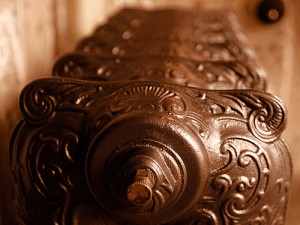Like most home-improvement projects, figuring out the size radiators that you’ll need for a room hinges on a formula — actually several formulas. Install radiators that are too large, and you’ll burn up. Too tiny radiators? You’ll need that Snuggie that your Aunt Myrtle gave you for your birthday last year. And those formulas depend on variables.
What’s a variable you say? Let me explain.
For all you English majors out there, pay attention to the root: vary. Yep, variables are things that vary or change. So in a formula, the variables are those little letters. And in many formulas — like the ones needed to calculate the number and size of the radiators in your house — there are lots of little letters.
What are the variables that your radiator technician depends on?
Think about the rooms in your house — some are small and some are large. In other words the size of the rooms vary. And any good radiator guy — like our friend Frank — will tell you that the size of a room determines the size of the radiator you need. Small room? Small radiator. Huge room? Probably more than one good-sized radiator.
So, guess what? Your old friend the volume formula plays a role.
V = lwh
where V = volume, l = length, w = width and h = height
(See those variables? Length, width, height? They’re pretty simple to figure out in a room with rectangular walls, floor and ceiling.)
But there are more variables to consider. Typically, you want your bedroom and hallways to be a little cooler than your kitchen and family room. So the kind of room that you’re heating will be another variable.
And rooms with lots of windows and doors — or houses with poor insulation — will lose more heat. Yep, more variables to consider.
Things are getting pretty darned complicated around here.
This is why most radiator technicians often use an online or computer program calculator to determine the size of the radiators needed for each room of a house.
But if you’re renovating an old house, like I am (and your name isn’t Bob Vila), you won’t likely need to find the BTU/hr needed to heat your dining room or the size of the radiator you need for your newly restored downstairs powder room. But knowing a little bit about the math that goes into the process can help you feel confident about the work your radiator guy is doing.
Besides, thinking of radiator heat is a good way to describe variables. Especially in November.
When have you used variables to work out a home-improvement problem? Share your ideas in the comments section.
